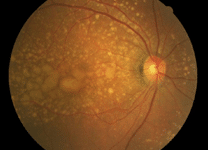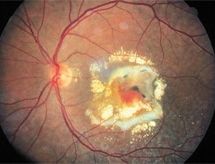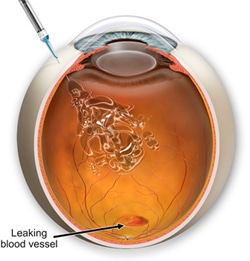Seeing Straight: Age-Related Macular Degeneration (AMD)

Age-related macular degeneration (AMD) is a leading cause of vision loss in those aged 50 and older, but there are ways to help.
If things are looking blurred, or straight lines appear distorted, it could be an indication of AMD, a common eye condition in people aged 50 years and older. It can lead to irreversible central vision loss. The loss of central vision could severely interfere with the ability to carry out everyday activities like reading and driving, and even impair the ability to recognise the faces of our loved ones.
Decoding AMD
AMD occurs when there is damage to the macula, the centre part of the retina needed for sharp, central vision.
There are 2 types of AMD:
Dry AMD
In the earliest stages of dry AMD, there could be little or no symptoms. As it progresses, areas of blockage may develop within the central area of vision as the retinal cells further degenerate and die.

Wet AMD
Abnormal blood vessel growth beneath the retina results in leakage of blood and fluid, causing sudden severe, painless central visual loss.

LOSS OF CENTRAL VISION COULD SEVERELY INTERFERE WITH THE ABILITY TO CARRY OUT EVERYDAY ACTIVITIES LIKE READING AND DRIVING.
Risk Factors
Unfortunately, ageing is one unmodifiable risk factor to developing AMD. Reported cumulative incidence for early AMD is about 4.2% for those aged 60 years and below, and 32.5% for those aged 80 years and older. For late AMD, the incidence reported was 0.17% for those aged 60 years and below and 24.3% for those aged 80 years and older.
Genetic factors also play a part, so those with a family history of AMD run a higher risk.
Fortunately, there are many other modifiable risk factors such as smoking, excessive UV exposure during outdoor activities, a poor diet rich in fat and low in fish and vegetables, obesity and hypertension.
Treating AMD
In dry AMD, early diagnosis and modification of risk factors can slow down its progression. Nutritional dietary supplements of antioxidants may be of benefit as well. Individuals above the age of 50 should get an eye examination and continue to go for annual eye screenings thereafter.
In the case of wet AMD, prompt treatment is key to maximising visual improvement and avoiding significant permanent central vision loss. For individuals with wet AMD who do not receive treatment, vision loss is progressive and rapid. Within 3 years, 72% would have developed severe visual impairment equivalent to legal blindness.
The current standard of treatment for wet AMD involves the injection of anti-VEGF (vascular endothelial growth factor) drugs into the eye.
These treatments not only prevent further vision loss but can also achieve visual improvement if administered early.

